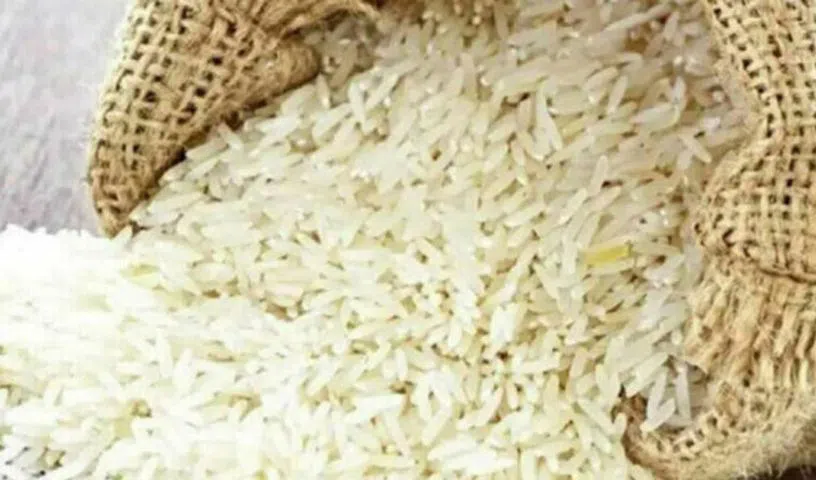Tags
Malaysia rice shortage will recur unless govt reforms supply chain, ups crop yields: Analysts

Local rice is price-controlled and retails at RM2.60 (S$0.75) per kg, while imported rice now costs up to RM4 per kg. PHOTO: BERNAMA
KUALA LUMPUR – Malaysia needs to change how it manages rice stockpiles and transform its agricultural sector to prevent current supply shortages from worsening in future, say analysts.
Recent weeks have seen supplies of locally produced rice dwindle as consumers switched to cheaper local varieties, following a 36 per cent price hike on imported rice by Malaysia’s sole rice importer Padiberas Nasional (Bernas) on Sept 1.
Local rice, which accounts for 65 per cent of the market, is price-controlled and retails at RM2.60 (S$0.75) per kg, while imported rice – which comes mainly from India, Thailand, Pakistan and Vietnam – now costs up to RM4 per kg.
Hypermarket chain Mydin said its distributors’ usual weekly delivery of 10kg bags of local rice dropped gradually since January from about 17,000 to just 2,000 as a result.
“As soon as the local rice is delivered to our stores, the stock is finished within an hour,” managing director Ameer Ali Mydin told The Straits Times last week.
While Deputy Minister of Agriculture and Food Security Chan Foong Hin said on Sunday that panic buying has eased and supplies of the staple grain have stabilised, critics and experts believe similar shortages will recur – and worsen – if no remedial measures are taken by the Malaysian government.
“We will still be having a shortage of local white rice, until or unless the global price of rice falls or the government raises the controlled retail price of local rice to RM3.40 per kg (or RM34 per 10kg),” said Datuk Ameer Ali, adding that even though the stockpile is slowly stabilising, it still does not meet their current requirement.
Before the Bernas price hike on imported rice, there was a RM6 difference between local and imported rice – RM26 per 10kg versus RM32 per 10kg. Now, imported rice is RM40 per 10kg.
The government on Sept 28 rejected suggestions that the price of local rice be raised or determined on the open market.
Global rice prices soared to their highest in 15 years in August, on the back of India’s decision in July to ban rice exports and fears that recent and ongoing adverse weather conditions stemming from the March-ended La Nina and El Nino phenomenon could impact production, according to the United Nation’s Food and Agriculture Organisation.
Critics have also trained their guns on Bernas, which is entrusted with managing national rice stockpiles.
“If Bernas had a sufficient stockpile of imported rice before India banned its rice exports, the price hike for imported rice would be much lower than what it is now,” said Mr Abdul Rashid, an executive council member of Pertubuhan Persaudaraan Pesawah Malaysia, a rice farmers advocate group.
While Prime Minister Anwar Ibrahim’s Pakatan Harapan (PH) coalition had previously criticised Bernas’ huge profits – RM670 million was paid out in dividends in 2020 – it has yet to dismantle the monopoly.
Bernas is controlled by tycoon Syed Mokhtar Albukhary, who has close ties to Umno, which is part of the PH-led unity government. The company holds a 10-year extension on its concession to import rice, until January 2031.
In December 2022, Datuk Seri Anwar said he had reprimanded Tan Sri Syed Mokhtar for Bernas’ monopoly, and got the businessman to pay RM60 million to poor farmers.
However, Agriculture and Food Security Minister Mohamad Sabu said in September that the federal government needs a strong reason to end the monopoly, and that inter-ministry discussions are required as it involves food security. Bernas did not respond to ST’s queries.
“There are positives for dismantling a monopoly like Bernas,” said Ernst & Young Consulting partner Mohd Husin Mohd Nor.
“Having more competition would result in lower prices for consumers and deter the proliferation of unscrupulous rice distributors and profiteering packagers. Increased competition would also spur innovation in driving players to become more efficient in order to stay competitive in the market.”
However, he said that ending the concession could negatively impact local farmers’ livelihoods, as Bernas also serves as a buyer of last resort in the rice industry, buying rice from farmers when necessary.
It could also impede Malaysia’s goal of increasing local rice production by 75 per cent in 2025 to cover consumption, he added.
To further boost stockpiles, Malaysia will also need to address its low crop yields.
The country’s agricultural productivity is only about 45 per cent of the high-income countries’ average, the World Bank observed in a 2019 report on Malaysia.
Key reforms to aid this transformation include reducing production costs, which are relatively high compared with other countries in the region, World Bank senior agriculture economist Anuja Kar told ST recently.
She suggested that some of the RM1.6 billion in the revised 2023 budget allocated to fertiliser and price support subsidies be repurposed towards innovation.
“Scientists in Malaysia Agriculture Research and Development Institute have been working on practices that reduce production costs, increase yields and thus profits for farmers while reducing greenhouse gas emissions. This could allow farmers to tap into global carbon finance to supplement their incomes,” she added.
https://www.straitstimes.com/asia/se-asia/malaysia-rice-shortage-will-recur-unless-govt-reforms-supply-chain-ups-crop-yields-analystsPublished Date: October 6, 2023







